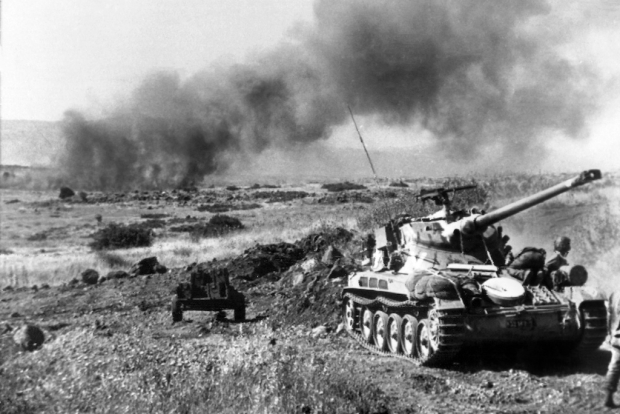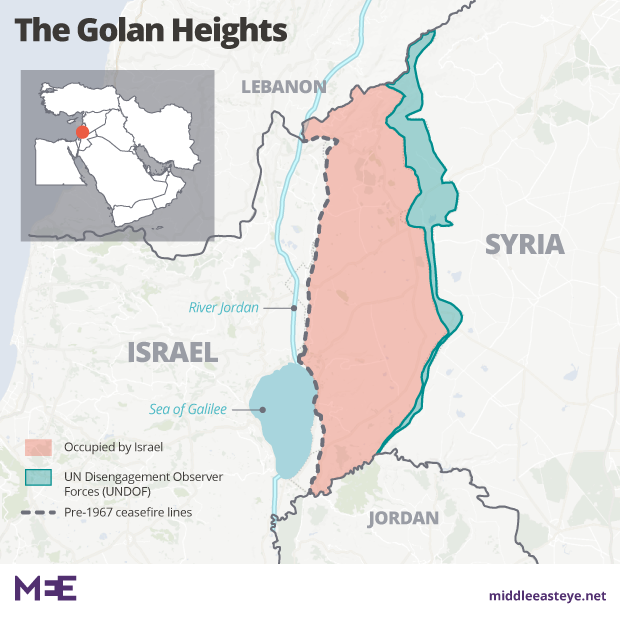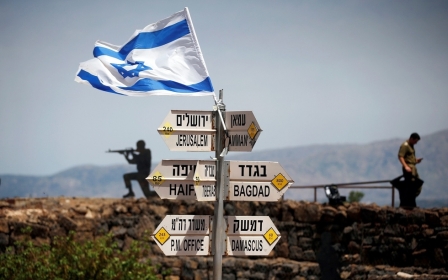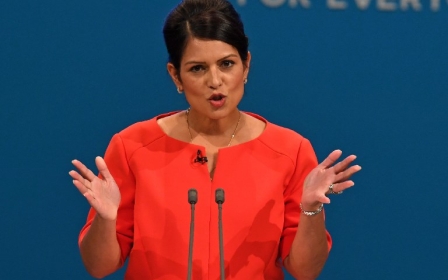The Golan Heights: Why it matters
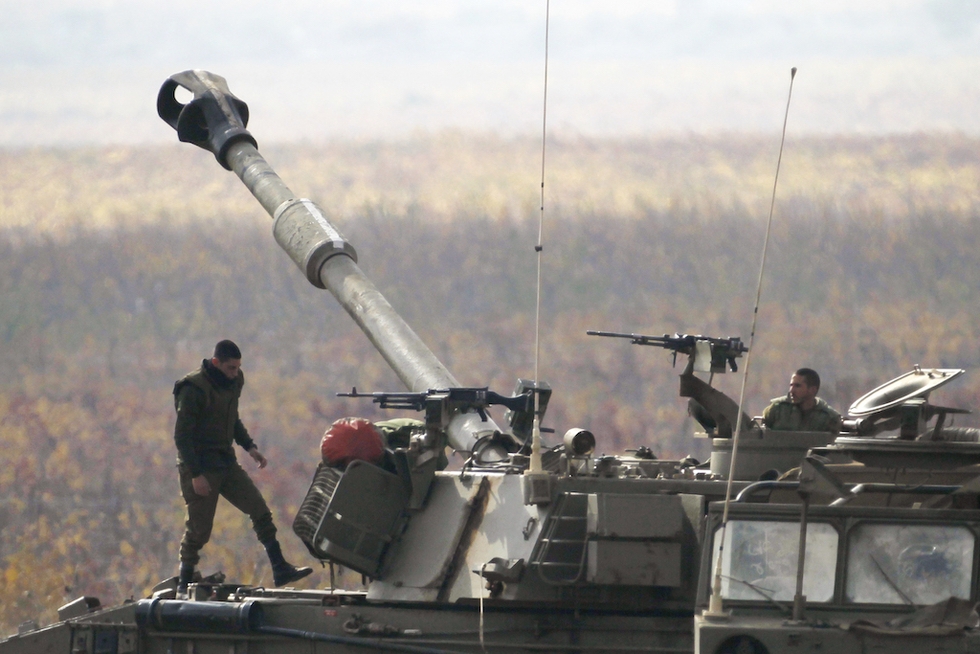
The Golan Heights have officially been recognised as part of Syria since the state acquired independence in 1944 and, despite numerous wars, claims and counter-claims, the international community continues to regard the scenic resource-rich region as part of Syria.
According to Israel's intelligence minister, however, that may change soon - in an interview with Reuters, Israel Katz said the US was being pressured to recognise the Israeli government's 1981 annexation of the area and that a move to do so was only months away.
Formally recognising Israel's annexation of the Golan Heights would mark a break in decades of US foreign policy and fly in the face of international consensus.
What is the status of the Golan Heights?
The Golan Heights is a strategic plateau straddling Israel and Syria and overlooking southern Lebanon. It was captured by Israel during the Middle East war of 1967 and subsequently annexed in a move never recognised by the international community.
The occupied portion of Golan refers to the western two-thirds of the geological Golan Heights, as well as the Israeli-occupied part of Mount Hermon.
The Golan is recognised as part of Syria by the United Nations. UN Resolution 242 calls for Israel to withdraw from Golan and other territories it occupied in 1967, including Gaza and the West Bank.
However, Israel has repeatedly refused to do so, and in 1981 declared the territory formally annexed to Israel.
Since 1974, the UN Disengagement Observer Force (UNDOF) has monitored the ceasefire between Syria and Israel, and patrolled the demarcation line between Syrian and Israeli-controlled areas of the Golan.
Following the establishment of a ceasefire in 1967, Israel began the construction of settlements in the Heights and moved settlers there, in contravention of international law.
In the late 2000s, secret talks began between Syria and Israel that reportedly included the possibility that the territory would return to Damascus in exchange for a peace deal.
However, negotiations collapsed when Israel launched its war in Gaza in 2009.
Who lives in the Golan Heights?
The 1967 war forced hundreds of thousands of Syrians to flee the Golan into other parts of Syria. The population of the region is now a mix of Syrian Arabs and Israeli settlers.
Since the Syrian war erupted in 2011, Syrians in the Golan taking Israeli citizenship has become more common, though the vast majority reject it.
Non-citizen Druze are regarded as having "permanent residency" status by the Israeli government, but cannot participate in elections or travel on an Israeli passport.
Why is the Golan Heights so important?
The Golan Heights are thought to provide around one-third of Israel's fresh water supply. Water from the Golan travels to the Sea of Galilee and the Jordan River.
Compared to other regions occupied by Israel that may have primarily strategic or cultural significance, the conflict over the Golan is heavily driven by resources.
As Israel's only land border with Syria, the territory is also strategically important.
The Golan has occasionally been struck by missiles and other forms of fire from Syria in recent years, with Israel retaliating against Syrian and Iranian targets.
In early May, a number of positions in the Golan were struck by what Israel said were Iranian missiles fired from Syria.
Israel has claimed the continued threat from Iran, Syria and their Lebanese ally Hezbollah has meant maintaining control of the Golan is vital for security.
"The most painful response you can give the Iranians is to recognise Israel's Golan sovereignty," said Katz, speaking to Reuters.
"With an American statement, a presidential proclamation, enshrined [in law]."
Middle East Eye propose une couverture et une analyse indépendantes et incomparables du Moyen-Orient, de l’Afrique du Nord et d’autres régions du monde. Pour en savoir plus sur la reprise de ce contenu et les frais qui s’appliquent, veuillez remplir ce formulaire [en anglais]. Pour en savoir plus sur MEE, cliquez ici [en anglais].


